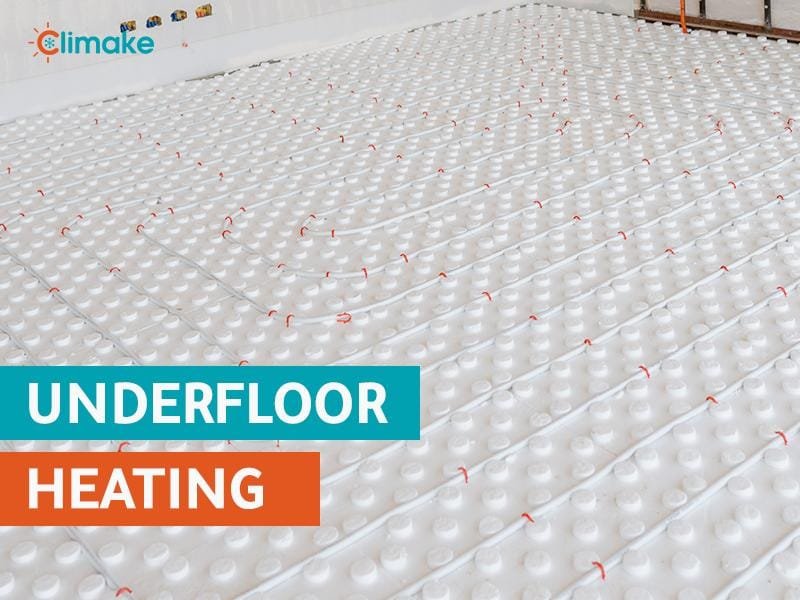Hydronic Radiant Floor Heating System
Imagine stepping onto a warm floor on a frosty winter morning—no slippers, no socks, just comforting warmth seeping through your toes. That’s the magic of a hydronic radiant floor heating system, a marvel of modern home comfort. Contact us for floor screed for underfloor heating from Climake Egypt.
What is a Hydronic Radiant Floor Heating System?
At its core, a hydronic radiant floor heating system uses heated water pumped through tubing underneath your floor to warm up your living space. Unlike traditional forced-air systems that push hot air around (and kick up dust), hydronic systems provide even, consistent warmth from the ground up.
The History and Evolution
Radiant heating isn’t new. The Romans used a system called a hypocaust, which circulated warm air under floors and through walls. Fast forward a couple of thousand years, and now we use water, tubing, and smart controls for a similar but far more efficient effect.
How Hydronic Radiant Heating Works
There are two main types of radiant floor systems: electric and hydronic. Electric systems use heated cables, while hydronic systems circulate warm water through flexible pipes. Hydronic systems are more cost-effective for large areas or whole-home heating, despite a higher upfront cost.
Boilers
The heart of the system is the boiler—it heats the water. These can be powered by gas, oil, or even solar energy.
PEX Tubing
This is the durable, flexible plastic tubing laid under the floor. It’s what the warm water flows through, creating the radiant heat.
Manifold System
A manifold is like a traffic control center for water, distributing it evenly through all zones and ensuring balanced heating.
Thermostats and Sensors
Smart thermostats can control zones individually. Some systems use sensors embedded in the floor to monitor and optimize performance.
Types of Hydronic Radiant Floor Heating
Slab Systems
Ideal for new construction, this system embeds PEX tubing directly into a concrete slab. It’s efficient but difficult to retrofit.
Overfloor Systems
These use pre-built panels or modular boards on top of existing subfloors, perfect for renovations.
Underfloor Systems
Installed beneath the floor joists, this type radiates heat upward. It’s less efficient but useful for existing homes where tearing up flooring isn’t ideal.
Installation Process
Step-by-Step Guide
-
Design the heating zones and layout.
-
Install insulation under the tubing.
-
Lay the PEX tubing according to the plan.
-
Connect to the boiler via the manifold.
-
Test the system for leaks.
-
Pour the floor (if using a slab system) or install flooring.
Professional vs. DIY
A pro ensures efficiency and safety, especially when dealing with boilers and pressure systems. DIY kits exist, but you’ll need plumbing and electrical knowledge.
Advantages
-
Silent operation
-
Even heat distribution
-
Energy-efficient
-
No air movement = less dust and allergens
-
Compatible with many energy sources
Energy Efficiency and Sustainability
Hydronic systems are incredibly efficient, especially when paired with condensing boilers or solar thermal systems. They heat rooms evenly and retain warmth longer, reducing overall energy use.
Best Flooring Materials for Hydronic Systems
Top Picks
-
Ceramic tile and stone: Best thermal conductivity
-
Polished concrete: Excellent for slab installations
-
Engineered wood: Compatible if properly installed
What to Avoid
-
Thick carpets and pads: Act as insulators and reduce efficiency
-
Solid hardwood: Susceptible to moisture and warping
Ideal Settings for Hydronic Heating
Residential Homes
Perfect for whole-home heating, especially in cold climates.
Commercial Buildings
Used in office buildings, warehouses, and shops where quiet, efficient heating is desired.
Greenhouses & Special Applications
Radiant systems are even used in greenhouses, driveways (to melt snow), and animal barns!
Maintenance and Troubleshooting
Common Issues
-
Air in the pipes (causes uneven heating)
-
Leaks (rare, but serious if they occur)
-
Faulty thermostats or sensors
Maintenance Tips
-
Flush the system yearly
-
Check for air locks
-
Monitor water pressure and flow
Smart Home Integration
Hydronic systems can be paired with Wi-Fi thermostats and smart home platforms like Alexa or Google Home for remote control, scheduling, and energy monitoring.Contact us for floor screed for underfloor heating from Climake Egypt.
Safety Considerations
Leakage Risks
Make sure PEX tubing is installed correctly to avoid water damage.
System Failures
Install backup temperature sensors and pressure relief valves to protect your home.
Hydronic radiant floor heating is a luxurious, energy-efficient, and environmentally friendly way to heat your space. It may require a bit more planning and upfront investment, but the payoff in comfort, savings, and long-term reliability is well worth it.Contact us for floor screed for underfloor heating from Climake Egypt.
FAQs
1. Can I install a hydronic radiant floor system in an existing home?
Yes, especially with underfloor or overfloor systems designed for retrofits.
2. What is the lifespan of a hydronic radiant heating system?
Typically, 30–50 years with proper maintenance.
3. Is it safe for pets and kids?
Absolutely! The heat is gentle and there are no exposed hot surfaces.
4. How long does it take to warm up a room?
Usually 30 minutes to a few hours, depending on floor material and insulation.
5. Does it work with all types of boilers?
Most boilers are compatible, but high-efficiency condensing boilers work best.


